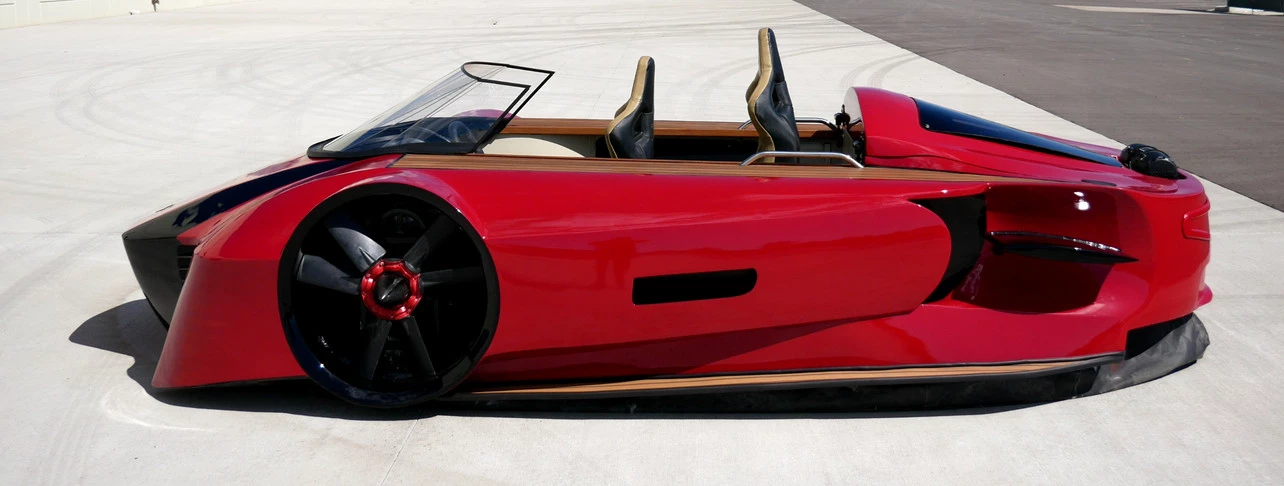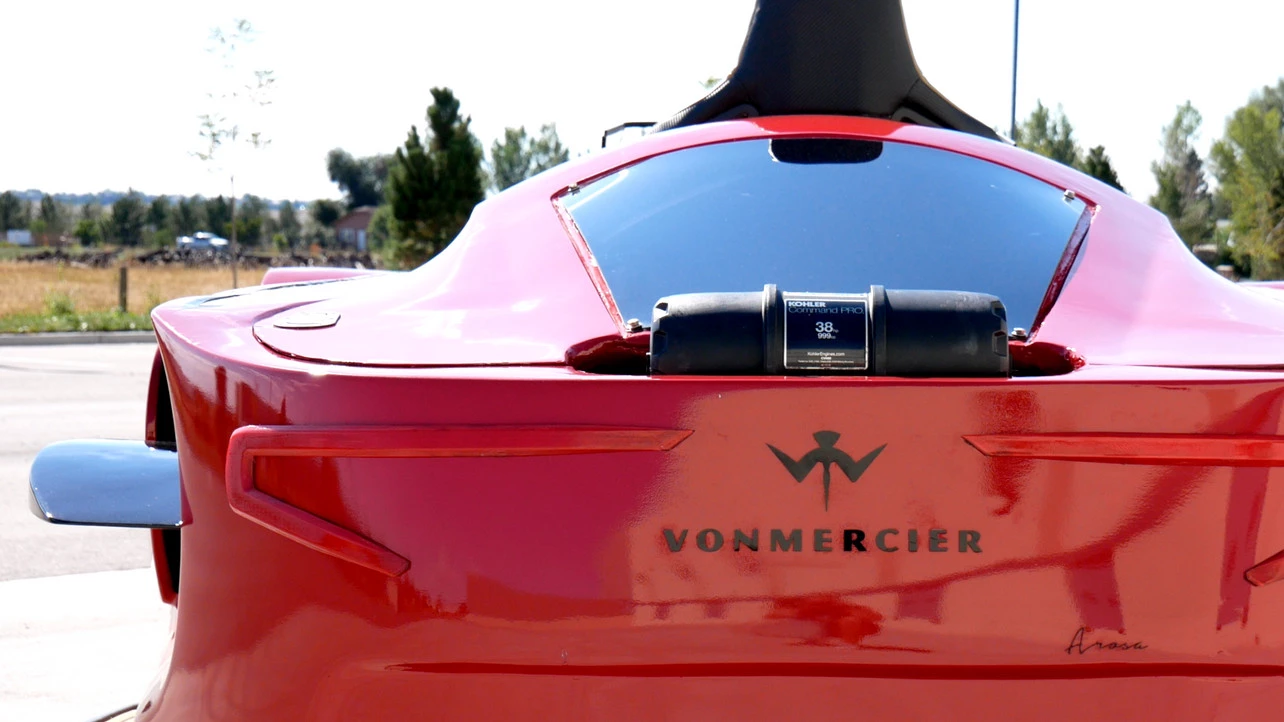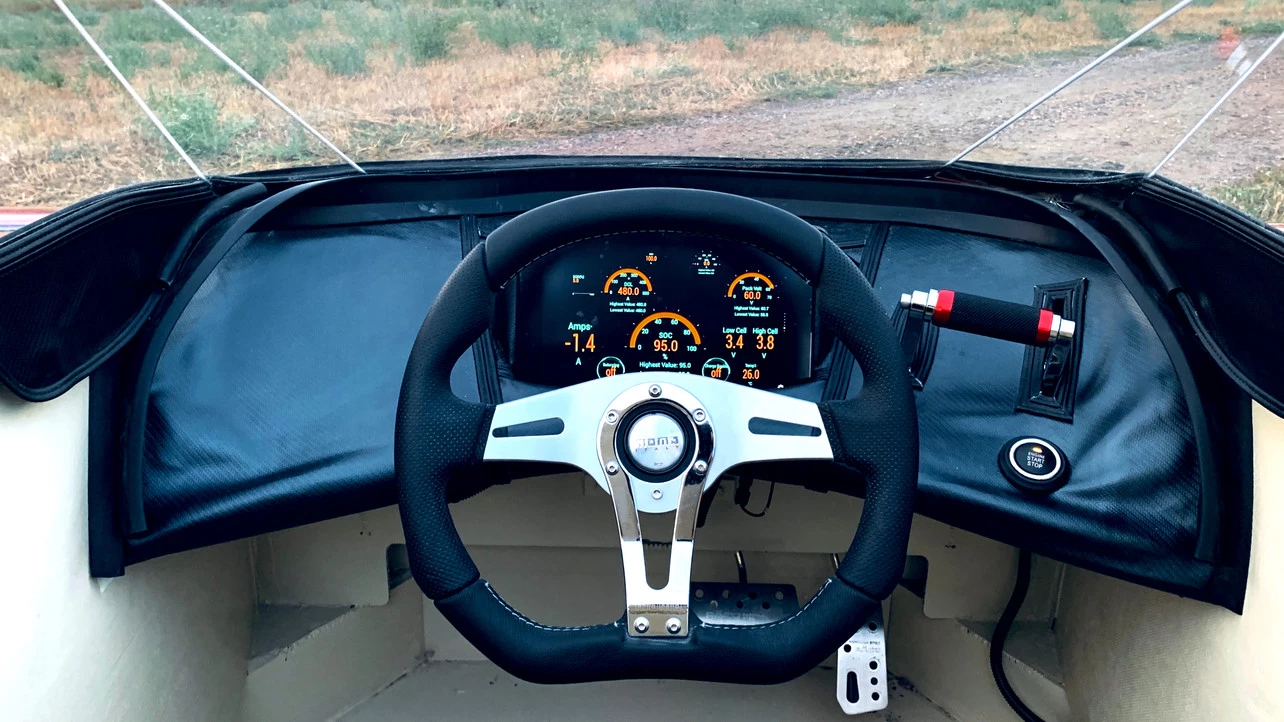The humble hovercraft has been around since the 1950s, floating drivers over land, sand and water alike on cushions of air trapped under flexible skirts. While they're not a common sight, they're still out there – indeed, there are plenty of companies still making them both as pleasure craft and utility vehicles, and you can pick a small one up second-hand for less than 10 grand if you want to have a crack at it.
Some hovercraft are less humble than others, and VonMercier's Arosa is flat-out flashy. Billing it as "the world's first luxury sports hovercraft," the company has fitted it with a carbon body kit that looks every bit like some sort of misshapen supercar, complete with what look like a set of gangsta 26-inch rims.
These are not gangsta 26-inch rims. They're giant fan outlets, and part of a system VonMercier says will make the Arosa "the most maneuverable personal hovercraft in the world."
The problem is this: hovercraft float on air, and they're blown around by big fans. Stopping one quickly can be achieved by flicking the entire vehicle around 180 degrees and blasting the fan, or by powering off, deflating the skirt, and engaging in an energetic interaction with whatever surface is beneath you.

Neither of these processes really jive with with the "luxury" thing VonMercier is going for, so the company has developed and patented a "directional control system" using thrust-vectored side fans in addition to the hidden main fan at the back. These allow finer control of lateral movements, as well as yaw turns and acting somewhat like a brake.
Hovercraft can be extremely noisy; the fans have to run pretty hard just to get them off the ground, let alone blow them around. The Arosa attempts to address this using 118 hp (88 kW) worth of electric motors, and enough battery for a 90-minute endurance, which the company claims will allow you to waft distances up to 45 miles (72 km) between charges. The prototype appears to have a gasoline engine on board as well, so maybe a range extender will be an option.

Seating two in tandem, the Arosa will look a little different to these photos when it's running, since it'll be sitting eight inches (20 cm) higher on its air cushion trapped under a flexible black skirt. VonMercier says it'll go faster than 60 mph (96 km/h) under the right conditions, and you know, that might just be fast enough in this case.
Of course, it can't be registered for the road. In most US states, it'll be treated as a boat, and sports car bodykit or not, we can imagine the kind of chaos a traction-free floating vehicle would cause in traffic. The company sees these more as slick-looking tenders that big yacht owners can pop onshore with.
As such, they're pretty expensive for a two-person hovercraft, starting at around US$100,000 and heading north as you start talking about custom paint jobs, bespoke wood selections, fabrics, infotainment gear and the like. Still, they'll turn heads for sure, and a hundred grand might not be a very big line item on the average superyacht docket.

VonMercier says it's hoping to begin customer deliveries this Northern Hemisphere summer, with US$1,000 deposits being taken now and some 180 customers having "expressed willingness to buy the Arosa." This timetable may be on the optimistic side, since we're yet to see this prototype Arosa in motion, but the company says it's got some new video coming soon that'll show it in action – and that might blow a few skirts up.
Get it? Blow? Skirts? ... Listen buckos, if you've got better hovercraft jokes I'd love to hear them!
Source: VonMercier








